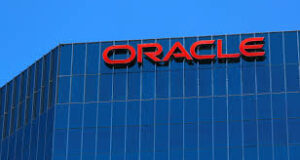THE NEWS: What Happened
Meta’s strategic calculus in augmented reality hardware has shifted decisively toward luxury brand partnerships, with leaked footage revealing that the company’s forthcoming heads-up display glasses will carry Ray-Ban branding despite earlier reports suggesting the eyewear giant had rejected the collaboration. The “Meta Ray-Ban Display” glasses, featuring a monocular HUD controlled by Meta’s neural wristband technology, are expected to launch at $800 starting price—representing a significant premium over the current $299 Ray-Ban Meta smart glasses.
The product development reflects the fruits of Meta’s €3bn investment in EssilorLuxottica, the parent company of Ray-Ban and Oakley, which granted Meta a 3% stake in the world’s largest eyewear manufacturer. The investment, with reports suggesting potential expansion to 5% ownership, appears to have resolved earlier tensions over the increased thickness required for display-capable frames, transforming a rejected partnership into a cornerstone of Meta’s AR strategy.
The leaked video showcases a comprehensive eyewear ecosystem spanning multiple brands and use cases: traditional Ray-Ban Meta glasses, recently launched Oakley Meta HSTN glasses, upcoming Oakley Meta Sphaera glasses with enhanced camera capabilities, and the flagship Ray-Ban Display glasses featuring neural wristband control. This product matrix suggests Meta is pursuing market segmentation rather than a single flagship approach to AR adoption, leveraging different luxury brands to address varied consumer preferences and price points.
THE INTELLIGENCE: What It Means
This development signals a fundamental shift in how technology giants approach hardware partnerships, moving from component supplier relationships toward strategic brand integration that creates mutual dependency and shared success metrics. Meta’s willingness to invest €3bn for luxury branding access indicates recognition that consumer adoption of AR hardware depends as much on fashion credibility as technological capability, particularly for products worn continuously in social settings.
The pricing strategy reveals sophisticated market positioning designed to establish AR glasses as luxury technology rather than experimental gadgets. At $800, the Ray-Ban Display glasses command nearly three times the premium of current smart glasses while remaining accessible compared to professional AR devices costing thousands. This pricing suggests Meta views early adopters as affluent consumers willing to pay premiums for both technological novelty and brand prestige rather than cost-sensitive technology enthusiasts.
The partnership structure creates competitive advantages that extend beyond individual product launches. EssilorLuxottica’s global retail network includes thousands of physical stores with established consumer trust and professional fitting services—infrastructure that would cost billions and decades for Meta to replicate independently. This distribution network transforms AR glasses from online-only technology purchases into mainstream retail experiences with professional consultation and ongoing support.
The neural wristband integration represents a critical differentiator from competing AR approaches. While Apple and others focus on voice control and gesture recognition, Meta’s sEMG technology enables private, subtle interactions that address social acceptability concerns fundamental to AR adoption. The ability to respond to messages through finger movements on surfaces rather than visible gestures or voice commands could prove decisive for workplace and social adoption.
The product ecosystem approach suggests Meta recognizes that AR adoption will occur across multiple use cases rather than through a single compelling application. By offering sport-focused Oakley variants alongside fashion-oriented Ray-Ban models, Meta is hedging against uncertainty about which AR use cases will achieve mass market adoption while building comprehensive brand positioning across lifestyle segments.
The timing coincides with growing investor recognition that AR represents the next major computing platform, following smartphone adoption patterns that rewarded early ecosystem builders disproportionately. Companies that establish dominant positions in AR infrastructure, content, and hardware integration may capture extraordinary value as the market transitions from experimental to mainstream adoption over the next decade.
THE BRIDGE: What To Do About It
For venture capitalists evaluating AR ecosystem opportunities, Meta’s EssilorLuxottica partnership illuminates investment themes that extend beyond pure technology development toward brand integration, retail infrastructure, and consumer adoption facilitation. The most compelling opportunities appear to be companies building complementary AR services, content platforms, or specialized hardware that benefit from increasing AR device adoption rather than competing directly with well-funded hardware platforms.
Similar opportunities requiring strategic attention:
- AR content creation platforms: Companies building tools for brands, creators, and developers to produce AR experiences, particularly those focusing on fashion, retail, or professional applications where Ray-Ban users might engage
- Specialized AR accessories: Startups developing charging solutions, protective cases, prescription lens integration, or fashion accessories specifically designed for smart glasses ecosystems
- AR analytics and optimization platforms: Companies providing measurement, user behavior analysis, or performance optimization for AR applications, especially those serving enterprise customers adopting AR for training, remote assistance, or customer engagement
Active investors in AR ecosystem development:
- Qualcomm Ventures: Strategic investment in AR infrastructure companies, particularly those developing processors, connectivity, or power management solutions for wearable devices
- Unity Technologies: Investment focus on AR content creation and distribution platforms, seeking companies that build tools or services enabling AR application development
- Luxottica corporate development: EssilorLuxottica’s venture activities targeting AR-related startups, particularly those addressing retail integration, prescription lens technology, or fashion-technology convergence
- Fashion and retail strategic investors: LVMH, Kering, and other luxury conglomerates increasingly evaluating AR technology companies that enhance retail experiences or create new luxury consumer touchpoints
For entrepreneurs targeting AR market opportunities, Meta’s luxury brand partnership strategy provides critical insights about consumer adoption requirements that extend far beyond technical capabilities. Rather than competing on technological specifications, successful AR companies must address fashion, social acceptability, and lifestyle integration challenges that determine mainstream adoption rates.
The investment requirements for hardware development appear prohibitive for startup companies, suggesting opportunities lie in software, services, and complementary products rather than competing AR glasses platforms. Companies that can build valuable services or content for existing AR ecosystems may achieve better risk-adjusted returns than those attempting to create competing hardware platforms requiring billions in investment and decades of development.
Retail partnership strategies deserve particular attention for consumer AR companies. Meta’s investment in EssilorLuxottica demonstrates the importance of physical retail infrastructure for products requiring fitting, customization, and ongoing support. Startups should consider retail partnership requirements early in business model development rather than assuming direct-to-consumer distribution will prove sufficient.
For corporate development teams at fashion, retail, and consumer technology companies, the Meta-EssilorLuxottica partnership creates precedents for strategic collaboration structures that combine technology capabilities with brand equity and retail distribution. Similar partnership opportunities may exist across other consumer technology categories where luxury branding and retail presence provide competitive advantages over pure technology capabilities.
International expansion strategies should consider the global nature of luxury brand partnerships and retail distribution networks. Companies that can leverage established fashion and retail relationships may achieve faster international scaling than those attempting to build country-by-country technology distribution independently








